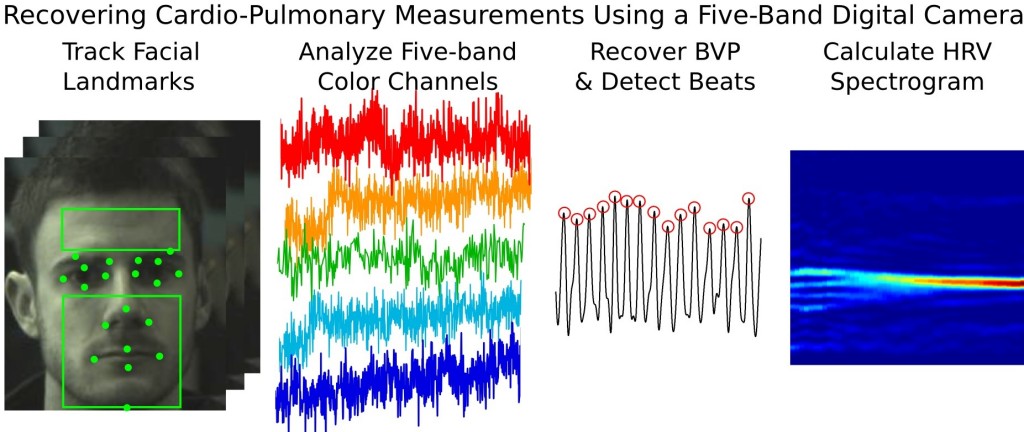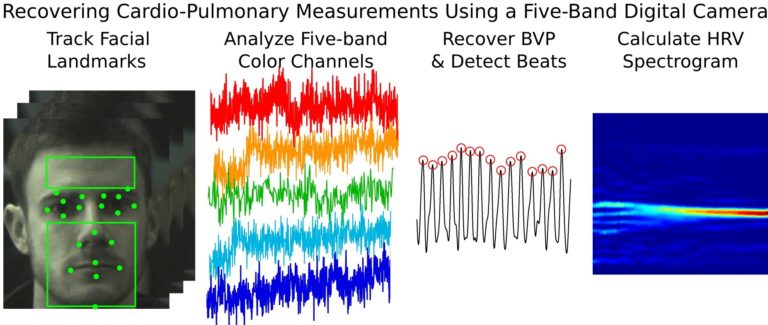Daniel McDuff, Sarah Gontarek and Rosalind W. Picard, MIT Media Lab
Volume 61, Issue 10, Page: 2593-2601

Remote measurement of the blood volume pulse via photoplethysmography (PPG) using digital cameras and ambient light has great potential for healthcare and affective computing. However, traditional RGB cameras have limited frequency resolution, they only capture information across three relatively broad frequency bands (red, green and blue). We present results of PPG measurements from a novel five band digital camera and show that alternate frequency bands, specifically an orange band and a cyan band, allowed physiological measurements much more highly correlated with an FDA approved contact PPG sensor. In a study with participants (n=10) at rest and under stress, correlations of over 0.92 (p<0.01) were obtained for heart rate, breathing rate and heart rate variability (HRV) measurements (high and low frequency power and ratio of the high and low frequency powers). In addition, the remotely measured HRV spectrograms closely matched those from the contact approach. The best results were obtained using a combination of cyan, green and orange (CGO) bands; incorporating red and blue channel observations did not improve performance. In short, RGB is not optimal for this problem: CGO is better. Incorporating alternative color channel sensors should not increase the cost of such cameras dramatically. As we can accurately capture changes in HRV measurements over time this method presents the possibility of measuring changes in the autonomic nervous system – perhaps changes due to different types of stress.
Keywords: Remote, photoplethysmography, heart rate variability, digital camera

